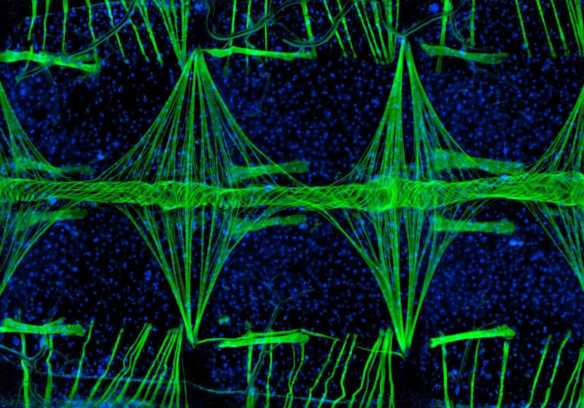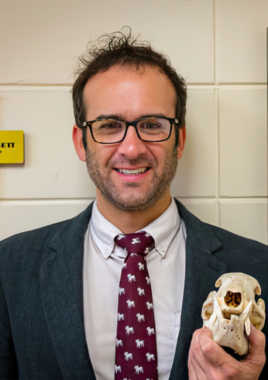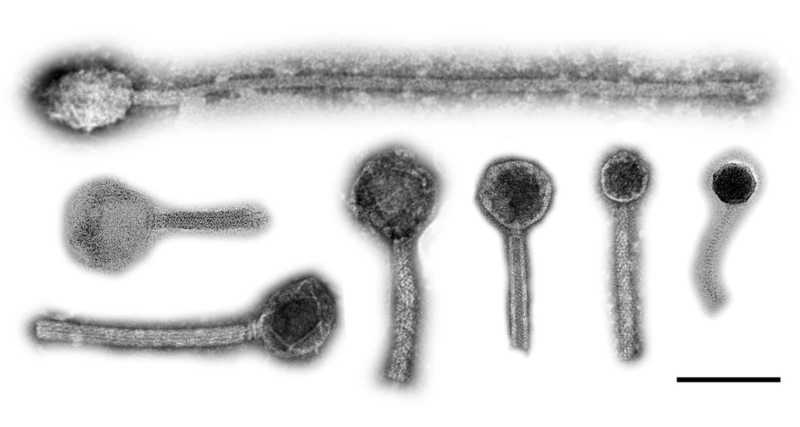Back in 2010, Dr. Jonas King wowed the Nikon Small World judges and took first place for his micrographic image of a mosquito heart. These pesky little creatures are more than just annoying, they often transmit dangerous parasites and viruses to humans and other animals. Mosquito-borne illness have killed billions of humans throughout history. Which is why Dr. King is dedicated to observing them.
Masters of MicroscopyMasters of Microscopy

Jonas King on How a Virus or Parasite Enters a Healthy Human Cell
Welcome to Masters of Microscopy: The People Behind the Lens, where we showcase and celebrate the individuals who are the heart of the Nikon Small World competitions. They are scientists, artists, researchers, educators and everyday curious individuals who uncover the fascinating microscopic world around us.

King’s 2010 first place image of a mosquito (Anopheles gambiae) heart.
Now an assistant Professor at Mississippi State University, King specializes in host-pathogen interactions such as how a virus or parasite enters a healthy human cell. He also studies how arthropods (invertebrate animals having an exoskeleton, a segmented body, and paired jointed appendages, like an insect or a spider) transmit diseases to other animals, including humans. For example, he is interested in understanding how a mosquito can transmit the Malaria parasite to a human through its salivary glands while the mosquito itself remains healthy.

Dr. Jonas King in his office
King launched, and still teaches, a course on public health at Mississippi State while also teaching two other courses on biochemistry. He’s studied how diverse headline-grabbing diseases, including the Zika and Bovine Herpes viruses, find and infect their targets. These days, he mainly studies Malaria, a parasitic disease transmitted by mosquitoes that still infects tens of millions of people a year and has no vaccine. Dr. King also researches important plant pathogens, which along with insects, are responsible for killing up to 40% of all crops produced by the agricultural community each year.
Dr. King’s work has vast implications for the greater global health picture, especially during these times when lives are threatened by a new viral pathogen, the novel coronavirus known as COVID-19.
“If we can understand how viruses and other pathogens detect and enter a host, we can find chinks in their armor, in other words – we can find weak spots that can lead to vaccines and treatments for the diseases they cause. Although plant pathogens don’t seem as urgent on the surface, defeating these could prevent the destruction of huge amounts of the global crop yield.” said Dr. King. If we can better understand viruses and how they live, he says, we can find cures and better prevent their spread. Dr. King also studies Bacteriophages, a type of virus that infects bacteria cells. Bacteriophages can alter a bacteria cell’s DNA, and some have been known to make bacterial infections like pneumonia harder to fight.

Bacteriophages, a type a virus that infects and replicates within bacteria, imaged by Dr. King and his colleague Rebecca Christian, scale bar 100 nm
Due to their size (about 20-200 nanometers in diameter) most viruses require an electron microscope to be seen clearly, but optical microscopy also plays a vital part in Dr. King's imaging work. Fluorescence microscopy using a nucleic acid stain, for example, can be utilized to see certain types of viruses at a higher level, like when viewing an infection in an in-vitro cell or embryo. This type of microscopy allows us to detect the presence of a virus in a cell. Think of it like looking at poppy seeds (the virus) on a fried egg (the cell). Even though they may be too small to detect details, you are still able to see their presence and even how they affect their host.
“Actually, there’s some misconception about the sizes of viruses too,” Dr. King added. “They’re not all the same size. While it’s true most of them are very, very small compared to other microorganisms, some, like pandora viruses, can be over a micron in diameter.”

Dr. King observes nature on a hike
The work Dr. King is doing could one day help to save lives. And not just for the diseases and viruses he studies. Much of the knowledge learned from one host-pathogen interaction can be applied to others, making the scope of his work much greater than the pathogen he has chosen to study.
“No one has cured malaria yet,” he said, “But I sure hope it’s me.”
So do we.
To stay up to date with the "Masters of Microscopy" series and receive your daily dose of Nikon Small World, follow us on Instagram, Twitter, and Facebook. Be sure to follow Nikon Instruments for the latest updates on equipment and technology.